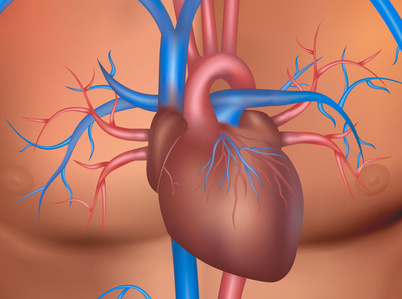Courtesy of Dr. Carlos Fava.
Tricuspid regurgitation (TR) is more common than we thought. Around 1.6 million people in the US and over 3 million in Europe experience significant TR.
 It usually has a functional cause and its negative impact on patient prognosis is strong.
It usually has a functional cause and its negative impact on patient prognosis is strong.
Its surgical treatment is challenging, and it is important that its resolution not leave significant stenosis behind.
Outcomes of the TRI-REPAIR study including 30 patients receiving percutaneous treatment with Cardioband were analyzed.
Read also: Is Tricuspid Regurgitation after TAVR Significant?
The inclusion criteria were severe symptomatic functional TR, annulus size ≥40 mm, stable medical treatment, and ineligibility for surgery. Researchers excluded patients with ejection fraction <30%, recent acute myocardial infarction, unstable angina within 30 days, systolic pulmonary artery pressure >60 mmHg, prior tricuspid repair, other moderate to severe valve disease, pacemaker implantation, anemia, dialysis, life expectancy <12 months, or cardiac cachexia.
Patient age was 75.2 years old, most subjects were female, and most were classified as New York Heart Association functional class III/IV. The N-terminal pro–B-type natriuretic peptide was 2924.9 pg/mL. The ejection fraction was 58%; 28 patients experienced atrial fibrillation and 16 experienced moderate to severe renal impairment. The EuroSCORE II was 4.1% and the Society of Thoracic Surgeons (STS) mortality score was 2.1%.
There was technical success with all patients.
Read also: Tricuspid Regurgitation: MitraClip Improves Survival.
Three patients died during the 6-month follow-up period. Overall, 76% of the population experienced clinical improvement; 88% of patients were deemed NYHA functional class I-II, the six-minute walk distance improved by 60 m (266 to 326, p = 0.003), and quality of life (according to Kansas City Cardiomyopathy Questionnaire [KCCQ] score) improved by 24 points (p < 0.01). Doppler echocardiography showed reductions of annular diameter of 9% (42 mm vs. 38 mm; p < 0.01), effective regurgitant orifice area of 50% (0.8 cm2 vs. 0.4 cm2), and mean vena contracta width of 28% (1.2 cm vs. 0.9 cm; p < 0.01).
Conclusion
After a 6-month follow-up, the Cardioband system seems to be safe in patients with moderate to severe functional tricuspid regurgitation. There was a significant reduction of tricuspid regurgitation, a decrease of annular dimensions, and improvements in heart failure symptoms, quality of life, and exercise capacity. Further studies are required to validate these initial promising results.
Courtesy of Dr. Carlos Fava.
Original title: 6-Month Outcomes of Tricuspid Valve Reconstruction for Patients with Severe Tricuspid Regurgitation.
Reference: Georg Nickenig et al. J Am Coll Cardiol 2019;73:1905-15.
Get the latest scientific articles on interventional cardiologySubscribe to our weekly newsletter
We are interested in your opinion. Please, leave your comments, thoughts, questions, etc., below. They will be most welcome.





